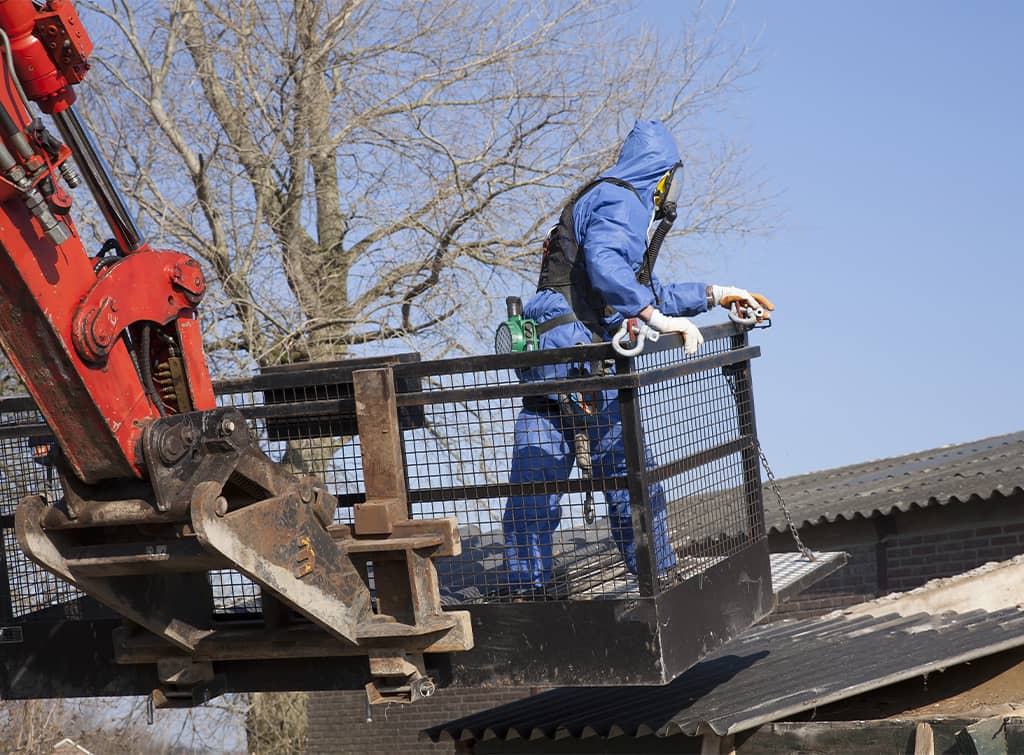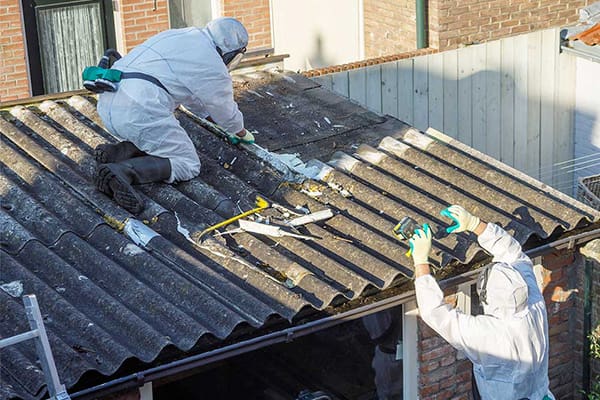Aftercare Following Asbestos Roof Removal Commercial Roofing Contractor For Removal
Aftercare Following Asbestos Roof Removal Commercial Roofing Contractor For Removal
Blog Article
Using Technology In Asbestos Roof Removal Commercial Roofing Contractor For Removal
Asbestos abatement guidelines are important for making certain safety and minimizing health risks associated with asbestos exposure - Asbestos Roof Removal Checklist For Homeowners. Asbestos is a naturally occurring mineral that was widely utilized in construction materials and numerous products as a end result of its strength and warmth resistance. However, extended exposure to asbestos fibers can lead to important health issues, together with lung most cancers and mesothelioma. As such, coping with asbestos requires cautious planning and adherence to established guidelines
Before any abatement work begins, it is essential to conduct a thorough assessment of the location. This involves identifying all asbestos-containing materials (ACMs) present and understanding their condition. If they are broken or deteriorating, the chance of fiber launch into the air increases, making it essential to plan for removal or encapsulation.

Proper training for personnel involved in asbestos abatement is paramount. Workers must endure specialised training to handle asbestos safely. This training ought to cover the use of private protective equipment (PPE), safe handling techniques, and emergency procedures for coping with potential exposure. Additionally, solely certified professionals ought to carry out abatement actions, as they possess the expertise required to administer hazardous materials successfully.
Common Challenges In Asbestos Roof Removal Commercial Roofing Contractor For Removal
Effective communication performs a crucial function in the compliance with asbestos abatement guidelines. Property owners and contractors must ensure that all stakeholders are informed concerning the presence of asbestos and the proposed abatement plans. This consists of notifying employees, tenants, and any relevant authorities concerning the potential hazards and the measures that might be undertaken to mitigate risks.
Once the assessment is complete and a plan is in place, the next step involves selecting the appropriate abatement method. Common methods include removal, encapsulation, and enclosure. Removal involves the entire extraction of asbestos materials, while encapsulation seals the fibers in place to forestall launch. Enclosure, on the opposite hand, entails setting up obstacles to comprise the asbestos.
Proper containment procedures are very important during the abatement process. This contains utilizing plastic sheeting to seal off work areas and stop contamination of the surrounding environment. Negative air strain systems may be utilized to make certain that any airborne fibers are contained inside the work area, further defending different areas of the building.

During the abatement process, frequent air monitoring is essential. Training Programs For Asbestos Removal Professionals. This helps make sure that fiber ranges remain below permissible limits. If testing indicates an increase in fiber ranges, immediate action must be taken to address the contamination, which can involve halting work until the problem is resolved and further containment measures are put in place
Importance Of Monitoring Air Quality During Removal Best & Cheap Removal Services Available
Once the abatement work is completed, proper disposal of the asbestos is necessary. Asbestos waste must be handled and transported according to local regulations, usually requiring disposal at specialised landfills geared up to administer hazardous materials. Clear labeling and secure packaging of the waste are important to prevent unintentional exposure throughout handling and transport.
After the disposal, a follow-up inspection ought to be carried out to confirm that the abatement was successful. This might contain extra air monitoring and a visible inspection of the work area. Proper documentation of the entire process, together with assessments, monitoring results, and disposal data, is crucial for compliance and future reference.
Diy Asbestos Roof Removal Considerations Risks Associated With Asbestos Roofs
In addition to following these specific guidelines, regular training and updates are crucial for all personnel concerned in asbestos management. Changes in regulations or best practices have to be communicated promptly to ensure ongoing compliance with safety standards. Establishing a tradition of safety that prioritizes health and environmental considerations can considerably improve the effectiveness of any asbestos abatement program.
To sum up, the implementation of effective asbestos abatement guidelines is not only a regulatory requirement but a moral obligation to guard human health and the environment. The multifaceted strategy, together with assessment, training, containment, monitoring, and correct disposal, plays a vital role in minimizing the risks related to asbestos exposure. Long-term vigilance and adherence to guidelines guarantee a safer environment for everybody.
In the end, effective management of asbestos ensures that communities are better protected against its hazardous effects. This requires ongoing collaboration amongst contractors, property owners, regulatory bodies, and the workforce concerned. By prioritizing safety and following established guidelines, it is attainable to mitigate the hazards posed by asbestos and create more healthy dwelling and dealing spaces for all.
Synergistic Effects Of Asbestos Exposure Removal & Replacement Of Roof Asbestos
- Always conduct a radical inspection and risk assessment by a certified professional earlier than beginning any asbestos abatement project.
- Develop a comprehensive management plan that outlines the procedures, obligations, and safety measures to be adopted in the course of the abatement process.
- Use appropriate personal protective equipment (PPE) such as respirators, disposable coveralls, and gloves to forestall exposure during the dealing with of asbestos-containing materials.
- Ensure that the work space is properly contained and ventilated to minimize the discharge of asbestos fibers into the encircling environment.
- Implement decontamination procedures for employees and equipment, together with devoted wash stations and methods for safely disposing of asbestos waste.
- Notify local authorities and residents about the abatement project, adhering to any required regulations related to public safety and environmental protection.
- Utilize approved asbestos abatement techniques, such as encapsulation or removal, depending on the situation and placement of the materials.
- Employ effective monitoring and air quality testing earlier than, during, and after the abatement to make sure compliance with legal requirements for airborne asbestos ranges.
- Train all personnel concerned within the abatement process on safe handling practices and emergency response procedures to make sure a safe work environment.
- Keep detailed information of the complete abatement process, together with inspections, abatement methods used, waste disposal documentation, and air high quality tests results.undefinedWhat is asbestos abatement?
Asbestos abatement refers to the means of reducing or eliminating asbestos hazards in buildings. This can include removal, encapsulation, or enclosure of asbestos materials, conducted by licensed professionals to ensure safety and compliance with regulations.
Why is asbestos abatement necessary?
Diy Asbestos Roof Removal Considerations Risks Associated With Asbestos Roofs
Asbestos abatement is critical to protect human health. Asbestos exposure can lead to serious illnesses, including lung most cancers and mesothelioma. Proper abatement prevents asbestos fibers from turning into airborne and minimizes the risk of exposure.
What are the guidelines for asbestos abatement?
Asbestos abatement guidelines include following federal, state, and native regulations, conducting thorough inspections, establishing correct safety protocols, using certified professionals, and documenting all procedures and findings for compliance and safety data.
Who ought to perform asbestos abatement?
Cost-Effective Strategies For Asbestos Removal Risks Associated With Asbestos Roofs
Asbestos abatement ought to be carried out by trained and certified professionals who focus on hazardous materials. They have the required instruments, data, and experience to conduct safe and effective abatement procedures.
What precautions are taken during asbestos abatement?
Precautions during asbestos abatement embody sealing off the work space, using protective gear, employing HEPA-filtered vacuums, and ensuring correct waste disposal. Adhering to these precautions minimizes the chance of contamination and protects employees and residents.
How can I find licensed asbestos abatement contractors?
Choosing The Right Method For Asbestos Roof Removal How To Get Your Roof Replaced For Under 1000
To find licensed asbestos abatement contractors, you'll be able to check your state’s health division or environmental agency, search online directories, or request suggestions from local building authorities. Verify their credentials before hiring.
What is the value of asbestos abatement?
Asbestos Roof Replacement Options Residential Asbestos Removal Services

The cost of asbestos abatement can differ widely relying on factors such because the extent of asbestos current, location, and the complexity of the job. An preliminary inspection is usually required to offer an correct estimate.
Are there laws governing asbestos abatement?
Yes, there are quite a few laws and regulations governing asbestos abatement, including the Clean Air Act and OSHA regulations. These laws are designed to protect employees and the public from hazardous exposure and outline strict procedures that have to be adopted.
Post Asbestos Roof Removal Cleaning Cost Guide For Asbestos Removal
What should I do if I suspect asbestos in my home?
If you think asbestos in your house, keep away from disturbing the material and search professional recommendation. It is advisable to rent a licensed inspector to assess the state of affairs and advocate appropriate actions, such as testing or abatement.
How long does an asbestos abatement project take?
The duration of an asbestos abatement project can range based on the scale and complexity of the work. Most small to medium projects could be completed in a few days, whereas larger, more sophisticated jobs may take weeks. Planning and scheduling are essential for correct timelines.
their website browse around this site Report this page